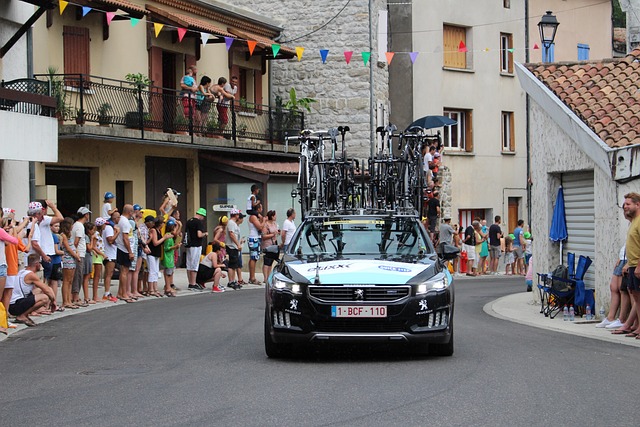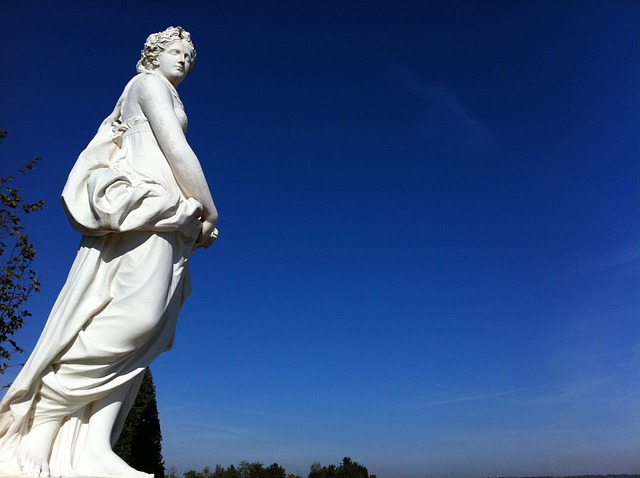Echoes of the Past: Immersive Experiences on a Versailles Guided Tour
The grandeur of the Palace of Versailles stands as a testament to the opulence of the French monarchy before the Revolution, evoking awe and fascination in millions of visitors each year. A guided tour through this architectural marvel transcends mere observation; it invites participants into a world where history whispers through its halls and gardens, and the lives of its past inhabitants echo vividly in the present. In this article, we explore the immersive experiences that define a guided tour of Versailles, engaging a deeper understanding of its rich history and cultural significance.
The Allure of the Palace of Versailles
Located just outside Paris, Versailles was originally a hunting lodge for King Louis XIII. His son, Louis XIV, transformed it into a sumptuous palace in the 17th century, reflecting absolute power and artistic innovation. The construction of the palace was a monumental endeavor, symbolizing the architect’s vision and the king’s desire to create a seat of political power and elegance.
Today, the Palace of Versailles serves not only as a museum but also as a vibrant cultural site that hosts various events, exhibitions, and performances. The opulent architecture, stunning gardens, and historical significance make it a must-visit destination for anyone interested in French history, art, and the intricacies of royal life during one of Europe’s most captivating eras.
Stepping Back in Time: The Guided Tour Experience
While exploring Versailles independently has its charms, a guided tour enriches the experience by providing context and narrative that might otherwise be overlooked. Knowledgeable guides immerse visitors in the stories of the palace’s past, introducing them to various characters who once walked its halls—from the extravagant Louis XIV to the tragic Marie Antoinette.
Contextual Storytelling
Guides often share fascinating anecdotes and little-known details about the lives of the monarchs and courtiers who inhabited the palace. Tours frequently highlight significant events, such as the signing of the Treaty of Versailles in 1919, which ended World War I and marked a pivotal moment in global history. These stories bring the historical figures to life, allowing visitors to form emotional connections with the palace and its legacy.
Rich Visuals and Artistry
The interiors of Versailles are breathtaking, adorned with stunning frescoes, gilded moldings, and elaborate chandeliers. A knowledgeable guide can direct attention to significant artworks and architectural details, explaining their symbolism and the influences behind their designs. The Hall of Mirrors, for example, is not just a beautiful space; it embodies the power and aspirations of Louis XIV, with its reflections symbolizing the strength of the French monarchy. Understanding the purpose and design of such spaces deepens appreciation for their beauty.
Interactive Engagement
Many tours incorporate interactive elements, enhancing the experience by encouraging visitors to engage with the story. Some guides may allow time for questions, inviting discussions about the political intrigues or daily lives of the royal family. Others might utilize multimedia presentations, providing visuals and soundscapes that transport visitors back in time, making history feel immediate and relevant.
Exploring the Gardens: Nature’s Grandeur at Versailles
The gardens of Versailles are as iconic as the palace itself, sprawling over 800 hectares of meticulously landscaped terrain. A guided tour often includes a stroll through these gardens, where the integration of nature and art becomes apparent. Visitors learn about the garden’s design, characterized by its baroque style—symmetrical layout, ornate fountains, and classical sculptures that evoke the grandeur of the royal lifestyle.
The Role of André Le Nôtre
André Le Nôtre, the landscape architect behind the gardens, revolutionized garden design in Europe during the 17th century. His approach was not just about aesthetics; it emphasized the relationship between the home and its surrounding environment. Guides often explain how Le Nôtre’s vision was to create a spectacle that showcased the king’s power and influence over nature. Walking through the gardens, visitors gain insight into the meticulous planning and artistry that went into every feature, from the intricate pathways to the expansive lawns punctuated by strategically placed fountains.
The Fountain Shows
A guided tour of the gardens can coincide with the enchanting fountain shows that bring the estate to life. These events blend music, choreography, and the stunning natural scenery, allowing visitors to experience joy just as the courtiers did centuries ago. The fountain shows are precise recreations of the grand festivities that characterized Versailles, further immersing visitors in the cultural practices of the elite.
Unearthing History: The Trianon Palaces
No visit to Versailles is complete without exploring the Trianon estates: the Grand Trianon and the Petit Trianon. These smaller palaces served as retreats for the royal family, offering a more intimate setting away from the bustling court life. A guided tour typically reveals a contrast between the grandeur of Versailles and the serene simplicity of the Trianons, highlighting Louis XIV’s desire for a personal space and Marie Antoinette’s quest for a more pastoral, idyllic lifestyle.
A Glimpse into Everyday Royal Life
The Petit Trianon, in particular, is closely associated with Marie Antoinette. Historians and guides shed light on the queen’s life, revealing her struggles and attempts to escape the confines of her royal obligations. This real-life glimpse into such personal spaces encourages visitors to reflect on the duality of royal existence: immense privilege intertwined with public scrutiny.
Artistic Expression in the Trianons
The interiors of the Trianons are richly decorated, revealing the taste and preferences of the royal family. Guides often discuss the artistic choices and themes that dominate the décor, including the use of soft colors and nature-inspired motifs designed to evoke feelings of comfort and tranquility. This atmosphere contrasted starkly with the formality of the main palace, allowing visitors to perceive how art and architecture served to express individuality, even within the rigid confines of royal life.
Modern Interpretations and Cultural Events
Versailles is not merely a relic of the past; it continues to evolve as a cultural hub. Guided tours often include information on contemporary events, such as art installations and musical performances set against the backdrop of this historic site. These events invite artists from around the world to reinterpret the palace and gardens, encouraging dialogues about the meanings that these historic spaces can hold today.
Exhibitions and Seasonal Events
Throughout the year, special exhibitions are frequently held that feature various themes ranging from fashion to classical art. Guides provide context for these exhibitions, linking them to the broader cultural significance of Versailles. The seasonal celebrations, such as the Grand Cavalcade or the Musical Gardens, allow visitors to experience the estate in a new light, reminiscent of the festive court life that once flourished within its walls.
Educational Programs
Educational programs held at Versailles often focus on history, art, and architecture. Guided tours that incorporate learning sessions foster an appreciation for the complexities of French history, incorporating discussions that package past events with the lessons they impart for today’s world. This educational approach resonates particularly with younger audiences, making the history of Versailles relevant and exciting.
Conclusion: The Lasting Impact of a Guided Tour
A guided tour of the Palace of Versailles is more than a journey through a historical place; it is an immersive experience that reconnects visitors with the echoes of the past. Through storytelling, visual engagement, and interactive exploration, the intricacies of royal life, art, and nature can be appreciated on a personal level.
From the palatial grandeur of the Hall of Mirrors to the peaceful retreat of the Trianons and the vibrant gardens, each element of Versailles tells a story, woven into the very fabric of French history. This powerful experience leaves an indelible mark on the hearts and minds of visitors, creating lasting memories and a deeper understanding of a pivotal era in history. When one walks through the halls of Versailles, one does not merely walk through space—one travels through time.
To visit the Palace of Versailles is to embrace the narratives that shaped a nation and to recognize that while the echoes of the past may grow faint, they are never truly silent.


